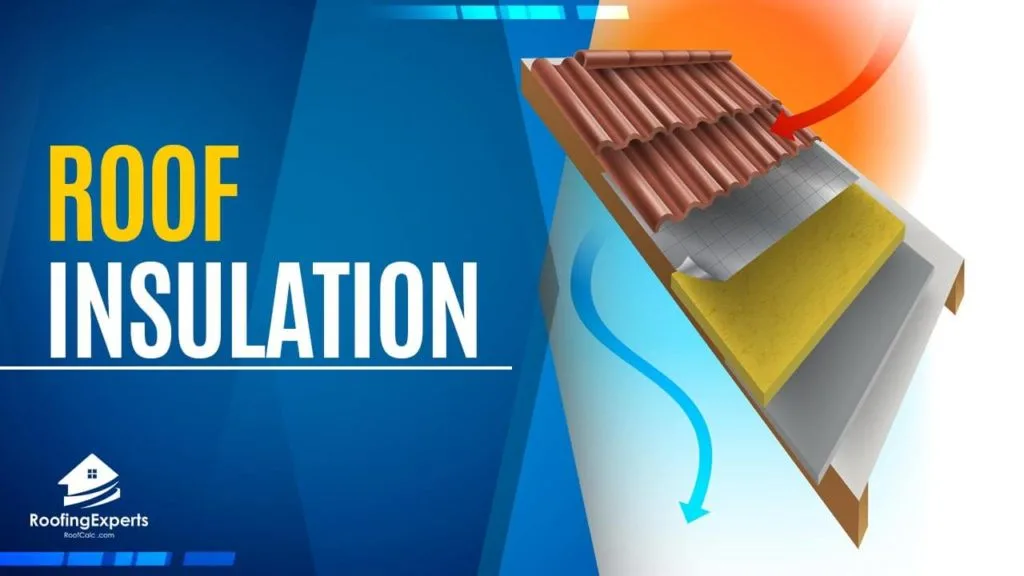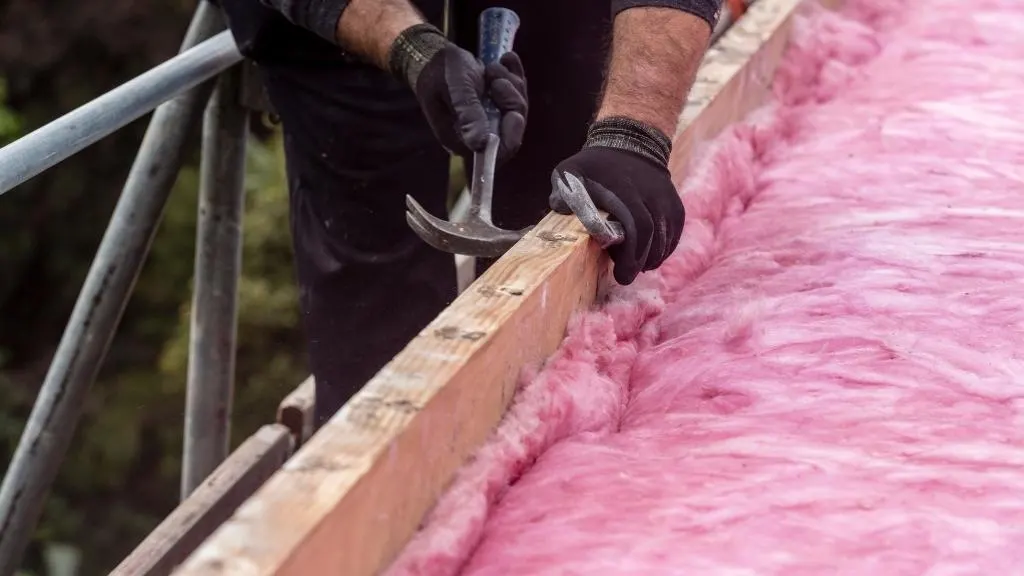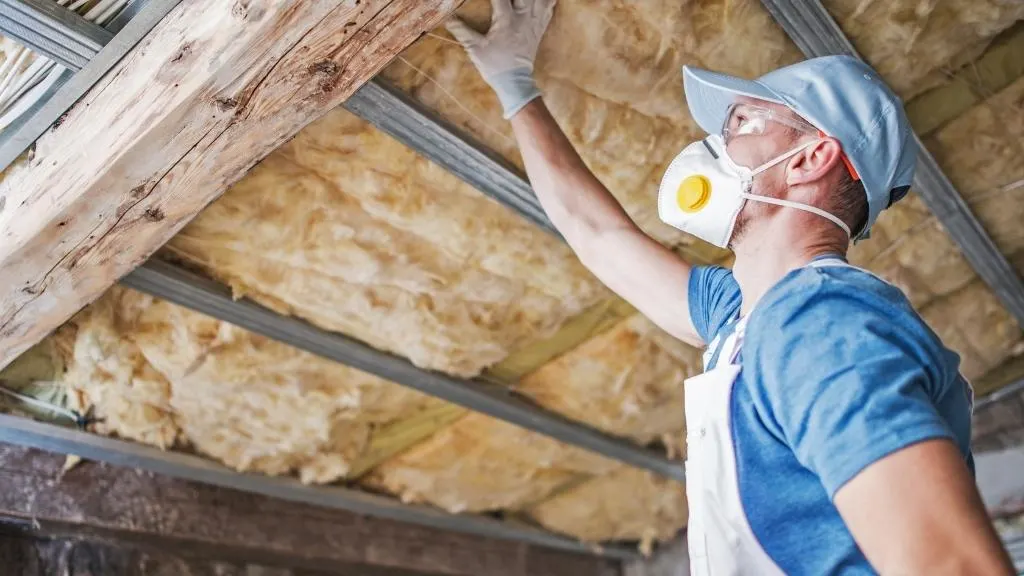
The insulation options that you choose for your house can make a big difference when it comes to heating and cooling costs.
This article discusses some of the best roof insulation options that homeowners have available to them so that they can find something that fits their budget and needs perfectly!
What’s High Quality Roof Insulation?
The R-value of your roof insulation will determine how effective it is at keeping the heat in. The higher the R-value, the better the insulation will be. Most homes have an R-value of between R-11 and R-40.
Insulation Options That Are Available to You
When it comes time for you to look at insulation options, there are a lot of different products that will be available to you. Some of the most popular include:
Spray polyurethane foam (SPF) is the only type of insulation that has been approved by Energy Star for use in attics and crawl spaces. SPF does not absorb moisture, thereby eliminating any potential for mold growth. Spray foam also helps reduce energy consumption and noise transmission.
Disadvantages of Spray foam include its high cost and the fact that it can take a long time to install.
Rigid insulation boards, such as extruded polystyrene (XPS), are made of plastic that is manufactured into large sheets or panels. Rigid insulation is easy to cut and install.
It resists moisture and does not rot or decay, thus providing a long-term solution for insulation. However, the high cost of the material limits its use in commercial applications.
Advantages of rigid insulation boards include ease of installation and lack of susceptibility to mold growth. Disadvantages include the tendency to absorb moisture over time if installed away from a vapor barrier and high cost.
Batt insulation is made of loose, fluffy fibers that are compressed into batts or rolls. It is the most common type of residential insulation.
Fiberglass batt insulation comes in various thicknesses for different applications, such as walls and attics. In addition to fiberglass, bats also are made from recycled newspaper, rock wool, and cellulose.
Advantages of batt insulation include low cost, ease of installation, and wide availability. Disadvantages include susceptibility to moisture and mold, fire hazard, and the need for an air-impermeable/vapor-barrier material during installation.
Loose-fill insulation is made of small particles, such as fiberglass, rock wool, cellulose, or vermiculite, that are blown into a cavity as a dry powder. Because loose-fill insulation expands as it is being placed in the cavity, gaps and voids can be filled completely. Loose-fill insulation can be installed without an air barrier or vapor barrier.
Advantages of loose-fill insulation include ease of installation and effectiveness at preventing air infiltration. Disadvantages include the need for a dust mask during installation and susceptibility to moisture and mold.
Structural insulated panels are made of two outer sheets of oriented strand board (OSB) with an insulating foam core. Panels can be manufactured in various sizes, thicknesses, and shapes. SIPs are used in walls, roofs, and floors.
Advantages of SIPs include ease of installation and energy efficiency. Only one side of the panel needs to be sheathed because the panels are structural in themselves.
The panels also act as an air barrier and can reduce sound transmission by up to 50%. Disadvantages include susceptibility to moisture, mold growth, and possible insect infestation.

What to look for before purchasing roof insulation?
Before deciding on purchasing roof insulation, it is very important to study the pros and cons of different types of roof insulation available in the market. Here are some questions that you must answer before purchasing roof insulation.
- Will the roof need maintenance? For example, if it will be an asbestos or an aluminum sheeted roof, then chances are very high that you will have to do roof repairs after 15 years. Hence it is advisable not to use insulation which needs major roof repair.
- Will the insulation be exposed to moisture? If your answer is yes, then consider using mineral wool insulation, as it does not absorb water and hence cannot support the growth of mold or bacteria.
- What is the climate like in your location? If you reside in a hot and humid climate, then using an insulation with high R-value is not advisable, as it will trap heat and make your home even more uncomfortable. In this case, you should go for an insulation with low R-value, which will help in reducing the amount of heat entering your home.
- What is the cost of the insulation? This is an important question that you must ask before purchasing roof insulation. You must also find out if there are any rebates or tax breaks available for installing roof insulation in your area.
- How long will the insulation last? You must find out the expected lifespan of the insulation before making a purchase. Some types of insulation, such as blown-in fiberglass, can last up to 20 years when properly installed.
- How difficult is it to install? If you are not comfortable doing roof repairs or installing insulation, then it is best to hire a professional to do the job for you.
- What is the environmental impact of the insulation? Some types of insulation, such as fiberglass, can release harmful toxins into the environment. Hence, it is important to choose an insulation that is environmentally friendly.
- What are the fire hazards associated with the insulation? Some types of insulation can release toxic gasses if they are exposed to fire.
- Will you need to do maintenance on the insulation? For example, some types of insulation require that you regularly re-coat it with paint or reapply silicone sealant around penetrations. If your answer is yes, then consider buying an insulation that will not require maintenance for at least 10 years.
- What are the installation requirements of the insulation? Some types of insulation, such as spray foam insulation, require that you have a special certification in order to install it. If your answer is yes, then you must factor in the cost of hiring a professional to install the insulation.
By answering these questions, you will be able to decide if you are ready for the task of installing roof insulation on your own.
How Can You Find Affordable Roof Insulation?
If you want to find the best roof insulation options but you do not want to spend a lot of money, then it is important that you choose something that can be easily installed by someone who knows what they’re doing.
Fiberglass and mineral wool are both affordable materials for your attic insulation, and there are also two-part spray foam kits that will provide excellent thermal protection.
If you want to keep your family safe and if you want to reduce the amount of energy that is used in your home, then it is important for you to make sure that your roof insulation options are effective.
Luckily there are several affordable materials available on the market today, so take some time when looking at different products before deciding what will be best for your house.
Why are they so important?
They are important because they can stop the heat flow in your home, so during summer it will be cool inside and during winter you won’t have to turn on the heater.
What is mineral wool?
Mineral wool insulation uses slag or rock dust which has been melted down into fibers. These fibers are spun together using a rotating machine that looks similar to a cotton gin.
What are the benefits of using mineral wool insulation? Some of the benefits include:
- It is made from recycled materials
- It is non-toxic and does not contain any form of asbestos
- It is resistant to fire, moisture and pests
- It can be installed in both new and old homes
- It is cost effective and easy to install
What are the disadvantages of using mineral wool insulation? Some of the disadvantages include:
- It can be dusty and itchy when installing, so you will need to wear a mask and gloves.
- The fibers can also become airborne and cause respiratory problems if you are not careful.
- It is not resistant to moisture, so it can become moldy if it gets wet.
- The installation process can be a little bit tricky, so you might need help from a professional contractor.
What is the R-value of mineral wool insulation?
The R-value of mineral wool insulation ranges from R-13 to R-49, depending on the thickness and density of the product.
Is there a fire rating for mineral wool insulation?
Yes, there is a Class A fire rating for all types of mineral wool insulation. This means that it will not ignite, smolder or propagate flames in the event of a fire.
How much does mineral wool insulation cost?
The price for mineral wool insulation varies depending on the brand, thickness and density of the product. However, you can expect to pay around $0.50 – $0.70 per square foot for a fiberglass insulation product with an R-value of R-11.
What are the installation requirements for fiberglass insulation?
Most of the time, fiberglass insulation comes in the form of a batt or blanket which can be easily inserted into wall cavities and attic spaces. There is no need to hire a professional contractor to install it for you – most homeowners can do it themselves with a little bit of instruction.
What is the R-value of fiberglass insulation?
The R-value of fiberglass insulation ranges from R-11 to R-38, depending on the thickness and density of the product.
Is there a fire rating for fiberglass insulation?
Yes, there is a Class A fire rating for all types of fiberglass insulation. This means that it will not ignite, smolder or propagate flames in the event of a fire.
How much does fiberglass insulation cost?
The price for fiberglass insulation varies depending on the brand, thickness, and density of the product. However, you can expect to pay around $0.50 – $0.70 per square foot for a fiberglass insulation product with an R-value of R-11.
What are the benefits of using fiberglass insulation? Some of the benefits include:
- It is made from recycled materials, so it is eco-friendly. Also, they do not contain any form of asbestos or urea formaldehyde which makes them non-toxic.
- It is cost effective and easy to install. You can also buy pre-cut insulation panels which makes the installation process even faster and easier, especially for homeowners who want a quick fix without hiring a professional contractor.
What are the disadvantages of using fiberglass insulation? Some of the disadvantages include:
- It can be dusty and itchy when installing, so you will need to wear a mask and gloves.
- The fibers can also become airborne and cause respiratory problems if you are not careful.
- It is not resistant to moisture, so it can become moldy if it gets wet.
- The installation process can be a little bit tricky, so you might need help from a professional contractor.
What are some other options?
Other types of roof insulation include cellulose, spray foam kits, rock wool, and straw bale. Each of these options has their own benefits, so it is important to do your research before deciding which one will be best for your home.
Now that you know about some of the best roof insulation options, it’s time to choose the right one for your needs! Remember to consider the cost, environmental impact, installation requirements, and lifespan of your roof insulation before making a final decision.
Conclusion
In conclusion, there are plenty of options when it comes to choosing which type is best for you. If cost-effectiveness and eco-friendliness are important factors in your choice then you should consider going with mineral wool or fiberglass as they both have excellent insulating properties. If you are an expert in insulation installation then spray foam or pre-cut panels can be a great choice for your home.
With the proper research, finding affordable roof insulation is not difficult at all! All it takes is knowing what questions to ask and which factors will play into making your decision. Once you have answered these essential questions, finding the best roof insulation options will be easy!


